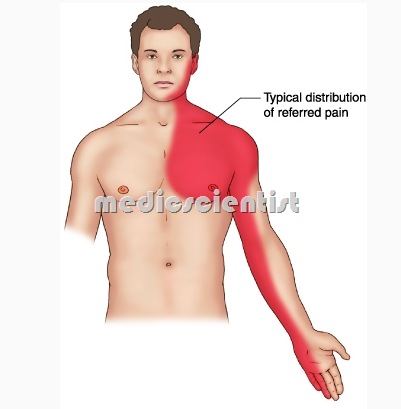PRESENTATIONS OF ischemic heart disease (IHD)
Angina pectoris, acute MI or death may be the First presentation of IHD. Stable Angina Pectoris
- stable angina pectoris is chest pain due to coronary :; ischemia which is of very short duration and easily -relieved (within 5-10 minutes) by simple measures like rest.
- Exercise testing or ambulatory monitoring shows transient ST segmen
ischemic heart disease EPIDEMIOLOGY —
- The epidemiology of silent ischemia may be viewed from the standpoint of two groups of patients:
- patients with a history of myocardial infarction or angina pectoris,
IHD Common in:
- Men – 50 to 60 yrs
- Women – 60 to 70 years
Symptomatic patients —
- The largest number of patients at risk of silent ischemia are those with stable angina.
- A number of studies have evaluated the prevalence of silent ischemia in patients with prior MI and in those with angina pectoris
Character of ischemic heart disease IHD pain:
Presents with chest discomfort –
- heaviness, choking, smothering, pressure.
- Frank pain may be present or only substernal discomfort.
- Patient can localize pain only with fist – diffuse pain.
- Pain which can be pointed with a finger is not cardiac pain.
- Squeezing, tightening or band-like constricting pain is typical of coronary ischemia.
- sient, fleeting, stabbing pain, pricking pain, and localized pain is rarely angina.
- Angina may be seasonal more in winters.
ischemic heart disease Durationion:
- 1 to 5 minutes
- ‘Radiation to left shoulder, both arms, ulnar surface of arms and ulnar syrfaces and hands back-of neck, jaw, teeth, epithilium occurs.
- ‘pitated by:
- Angina typically occurs due to stress, z.ise, activity, emotions, fear, flight, frustration, –;e, hurry and worry.
- Angina may be precipitated by unusual exertion, heavy meal or exposure to cold.
- Angina at rest may occur:
- called rest angina
- Angina in recumbent position is called decubitus an–
Nocturnal angina :
- Angina occurring at night, like an attack of PNO Paroxysmal nocturnal , nocturnal angina.
- hreshold for an ina the level of exertion whictLQrings on pain) varies from elsn to erson, day to day.
Diurnal variation:
- Angina is more common early in the morning than late in the day.
Angina equivalents:
- are symptoms of myocardial ischemia other than pain like dyspnoea, fatigue, faintness. Angina equivalents are more common in the elderly.



